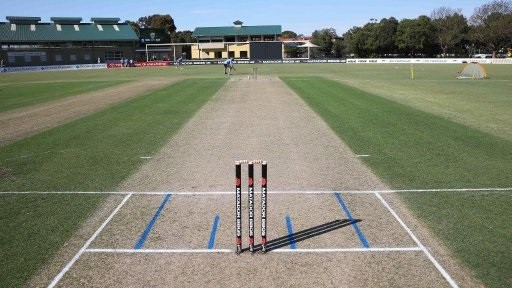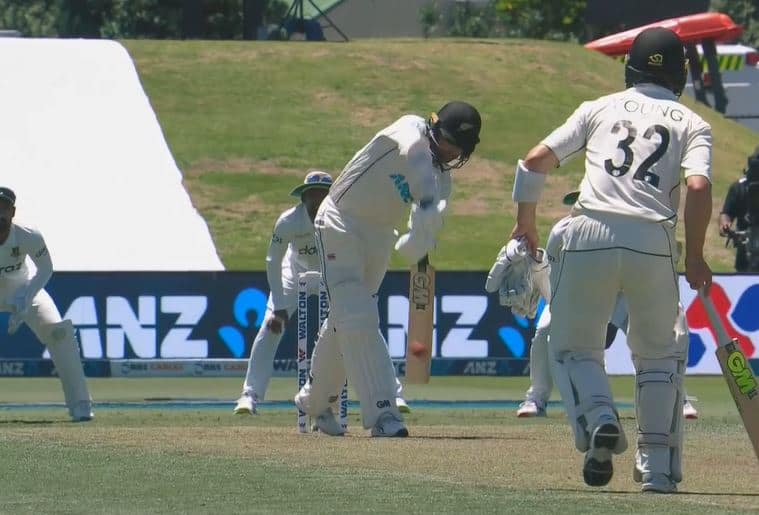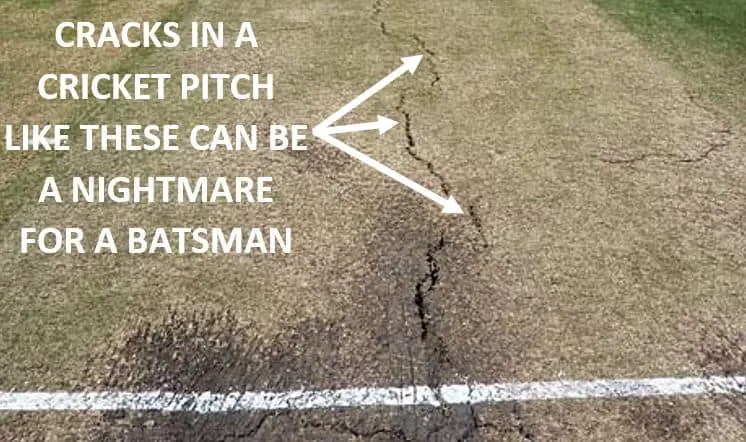One of the reasons that cricket is such an interesting sport is the variety of pitches that teams can end up playing on. If they’re playing on a good quality batting pitch, a decent test match side will have a good chance of racking up a solid total in excess of 400. However, the next game may be played on a pitch that gives a lot of assistance to the bowlers, and this may mean that the same batting side can easily be bowled out for a much lower score.
Each test playing nation usually produces different types of pitches that suit their strengths as a team, but which one of these is best to bat on? What kind of pitch should you be looking for if you want to bat first? In this post, I’ll answer all those questions!
So, which type of pitch is best for batting in cricket?
The best type of pitch for batting is a hard surface that provides good pace, consistent bounce, and doesn’t offer much for the bowlers. This is often referred to as a ‘flat pitch’ or a ‘road’. Ideally, the pitch will not have any grass, cracks or dry areas on the surface as these are all helpful for the bowling side.
Any test playing nation can produce this type of pitch, but it is more likely in some nations than in others. From watching a lot of cricket in the last 20 years, the countries where these types of pitches are most likely to appear are Australia, Pakistan and New Zealand. Some of the pitches in the UAE have been quite batting friendly too!

Although batters are happy when this type of pitch is produced, not everyone else is! Bowlers would much rather see a different surface that gives them a much better chance of taking wickets, and a majority of spectators would probably rather see this too! In my opinion, cricket is at its best when there is a great level of contest between bat and ball. The pitch should be good to bat on, but not too good that it takes away the threat of the bowling. Finding a balance is key. This leads to much more exciting games, rather than just watching each team pile up massive scores and seeing the game end in a draw.
It is worth noting that a pitch may be incredibly good for batting in the first innings of a test, but it may become very difficult to bat on by the time the 4th innings rolls around. Over the course of a 5-day test match, pitches take a lot of punishment from the sun and consistent heat, the bowler’s boots and the ball being slammed into the pitch by the fast bowlers. This can open up cracks, create large dry patches known as ‘rough’, and can also lead to dents appearing in the surface of the pitch. The presence of all of these things can make a once docile pitch incredibly hard to bat on as the game wears on, leading to inconsistent bounce and much sharper spin. If you’d like to read more about why it’s so tough to bat in the 4th innings – click here to read my post on that!
Why Is Consistent Bounce Better For Batting?
If a pitch offers consistent bounce, this means that the batters can play their shots with a lot more confidence. When the ball bounces on a full length, the batters know that the ball is not going to surprise them by suddenly bouncing a lot higher than usual. This means they can move their front foot towards the ball and play a front foot shot. Similarly, they know that when the ball is bowled on a short length it is going to bounce up towards chest/head height. This allows them to play back foot shots confidently.
To put it simply, on pitches that display consistent bounce, batters can read the length of the ball and then trust that the ball will bounce at a normal level. The batters know where the ball is going to be once it reaches them. This also makes leaving the ball a lot easier!
Problems start to occur when you are playing on tougher pitches where the ball bounces inconsistently. Imagine coming forwards on to the front foot to play a drive against a full ball, and then the ball suddenly explodes out of the pitch and bounces up towards your head. This is an impossible ball to deal with, and as a result many batsmen will get out having gloved the ball to the keeper. It also often leads to them taking painful blows on the body!

On these types of pitches deliveries can also bounce a lot less than usual. Imagine seeing a bowler bowl a back of a length ball, and then watching as the ball scoots along the ground, hitting you on the boot or going under your bat and hitting the stumps. Again, this is impossible to deal with and is a main reason why batting on pitches with inconsistent bounce is so hard.
Pitches in South Africa seem to be some of the ones that have the most inconsistent bounce. From watching plenty of test series in that country, the pitches don’t offer much spin but they cause havoc for batsmen when start to bounce erratically as the game wears on. It doesn’t help that South Africa has consistently developed some of the quickest most intimidating bowlers the game has seen such as Dale Steyn, Morne Morkel, Kagiso Rabada and Anrich Nortje – who are perfect for exploiting pitches like this! Many of cricket’s greatest batsmen have struggled in South Africa as a result.
Why Does Grass On The Pitch Help Bowlers?
If there is grass on the surface of the pitch then this usually means that there is a bit more moisture in the pitch. Anything like this is helpful for the bowlers! If the grass is very green, it’s likely that there’s a lot of moisture. As a result, fast bowlers will probably find it much easier to seam the ball around. If the grass is drier and more yellow in colour, there may not be as much moisture, but the bowlers will still find some assistance and get the ball to seam.
If the bowler is getting the ball to seam around a lot, then this isn’t great for the batting side. Seam movement is incredibly difficult to adjust to and can result in a lot of edges through to the keeper and the slips. When the batters are playing on a hard, flat pitch with consistent bounce and no grass, they can be more certain that the ball isn’t going to move laterally once it bounces – which means they can play more authoritative shots.
Why Do Cracks On The Pitch Help Bowlers?
This one is relatively simple! If large cracks open up in the surface of the cricket pitch and the ball lands in one of them, there is no chance of anyone predicting how the ball is going to behave. It could explode in towards the batter or away from them, and it could also bounce much higher or lower than usual.
This kind of thing affects the mindset of the batters at the crease and can make them a little bit hesitant to move their feet positively. When a batter is worried about what the ball might do instead of being focused on moving their feet to the line of the ball and playing their shots, it’s probably a matter of time until they get a delivery that will dismiss them!

Why Do Dry Areas On The Pitch Help The Bowlers?
If the pitch is very dry, with certain areas that are rougher than others, then this can offer a lot of assistance to spin bowlers. When the ball is spun into a dry area of a pitch there is more friction between the ball and the pitch because of the roughness of the surfaces. This allows the ball to grip more and spin more sharply as a result. Contrast this with when the pitch isn’t very dry at all. In this case, there will be just a normal amount of friction between the ball and the pitch and as a result the ball will spin a standard amount. This is much easier for batters to deal with.
In the sub-continent in countries like India and Sri Lanka, some pitches can start off very dry and will immediately be favourable for spinners to bowl on. That’s why you’ll often see spinners bowling near the start of the innings in these countries – and sometimes even opening the bowling! When the ball is spinning a lot because of the dryness of the surface, it is harder for batters to cope with as they are never quite sure how much the ball will turn. Hence, most batters would love to bat on a non-dry, flat surface that I described at the beginning of this post!
Conclusion
I hope this post has given you some insight into how cricketers judge a pitch and which ones they would rather bat on. Next time you watch a match, pay careful attention to how the commentators and players speak about the pitch, and you’ll be able to get a good idea of the game you’re about to watch unfold!
If you’d like to read more about how teams will decide whether to bat or bowl at the toss, then I’ve got a fantastic guide that you can read by clicking here! If you’re a captain or simply if you’re interested in the thought process behind it, I’d recommend reading it.
